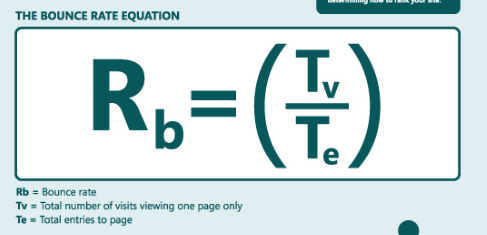Savvy marketers know that there’s no such thing as a “set it and forget it” tactic in the marketing arsenal. The dynamic nature of digital marketing demands attention because the fate of a campaign or important initiative can be boosted—or even saved—given the chance to course correct based on analytics. That’s not to say that you have to nervously check CTRs and conversions on an hourly basis in hopes of affecting an outcome. It’s not quite that intense. What does that have to do with ignoring your bounce rate? Let’s discuss.
And there are elements that can ride out the analytics a bit longer than others before making any changes. Most people would throw bounce rates into that category, but we suggest giving the bounce a little more respect than it sometimes gets.
A bounce primer
Just to refresh, there are two types of bounces—soft and hard. When it comes to email, soft bounces include those that may be stalled because a recipient’s inbox is full, their server is acting up, or there is a temporary problem with the actual email address. On the other end of the spectrum are hard bounces, which are what they sound like. Emails simply won’t go through because the addresses are closed, nonexistent, or simply wrong. A recipient’s server will probably hold the soft bounces until they can be completed, but you should eliminate any hard bounces from your list as soon as you learn about them.
Websites can have soft and hard bounces, too, as indicated by visitors who leave a site after visiting a page to which they’re directed. The rationale is that the content or appeal of the page wasn’t engaging enough for visitors to dive deeper, and they simply bounced away.
Bounce rate benchmarks
There are standard formulas for determining a good bounce rate for websites and emails as follows:


It’s only your reputation
There are only a few ways to manage your online reputation, and controlling your bounce rate is one of them. Internet service providers use bounce rates to determine your reputation as an email sender. If you have too many hard bounces, you’ll look like a spammer, and they may block all your emails. So, clean out any hard bounces as soon as you can to keep your lists clean.
Where do you go after a bad bounce rate?
Whether it’s an email or a website that’s getting a bad bounce rate, you’ll want to make revisions as soon as possible to stop any further negative results. Some issues that can help improve bounce rates include:
- Improving the content, design, links, and so on, on web pages with big bounce rates
- Learn what pages visitors spend time on and learn from those observations
- Adjust keywords directing visitors to your site if the current ones aren’t relevant
- Ensure that your site is mobile friendly
- Check email list imports for format errors
- Don’t send business emails from a free email service
- Send a re-engagement campaign to verify the interest of email recipients
- Make sure that your email list is new with proper opt-in addresses
Who knew that a simple little bounce rate could have so much power?
Now you do. So the next time you’re digging into your analytics, don’t be so quick to skim over the numbers. There’s a lot of information in those figures that could mean the difference between a robust marketing initiative and one that just fizzles out.
Editor’s Note: This post is by Deb Schmidt, a freelance writer specializing in marketing, IT, and several other topics. To learn more about Deb — or to have her write for your brand — be sure to check out her nDash profile page.
